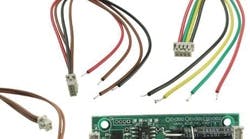Big boost for tiny energy harvesters
Energy harvesting (EH) is a hot field today. Engineers are using transducers to generate energy from every day phenomena such as vibrations, small heat differentials, light, and RF waves traversing the atmosphere. Trouble is, the energy available from such sources is typically low, so low that it can be difficult to design circuitry able to extract the available energy for powering useful tasks.
Part of the problem is that many energy sources produce voltages that are alternating in nature and must be rectified before they can be harvested. But even sensitive diodes normally used for rectification purposes can have turn-on voltages between 150 and 340 mV. In other words, they may not conduct with the super-low microwatt levels of energy (about 4 to 40 μW) available from common sources such as ambient RF and small vibrations.
Such situations may call for use of specialized conversion devices called low-voltage booster modules (LVBM). The LVBM is designed to boost the ultra-low voltages of devices that cannot supply sufficient voltage drive to power the EH module directly. A block diagram of the EH module reveals the booster module sits at the output of the transducer in front of the rectifier/energy management circuit. The module boosts the source’s native voltage output and produces an output capable of supplying voltage levels compatible with rectification and power management circuits. This makes EH technology practical for many applications that otherwise couldn’t benefit from it.
If you decide to create your own low-voltage booster circuit, it isn’t without some design considerations. Among them are whether or not harvesting transducers are directly connectable with LVBM input. Some may need an impedance matching circuit. There are also issues that arise in engineering project such as the cost of interfacing the module, compatibility with module form/fit/function, whether or not there is expertise in-house for interfacing the module, and the degree of non-recurring engineering costs involved with research, design, development, and testing.
In the EH arena, the LVBM reduces the cost of integration and simplifies interface between the transducer and harvesting circuits. The LVBM has a two-wire input (positive and ground) and a two or four-wire output (a two-wire standard ac output, and a two-wire dc output). For most integration purposes, all the designer really needs to know are the device’s power requirements and the I/O impedances.
Resources
Advanced Linear devices Inc., www.aldinc.com
